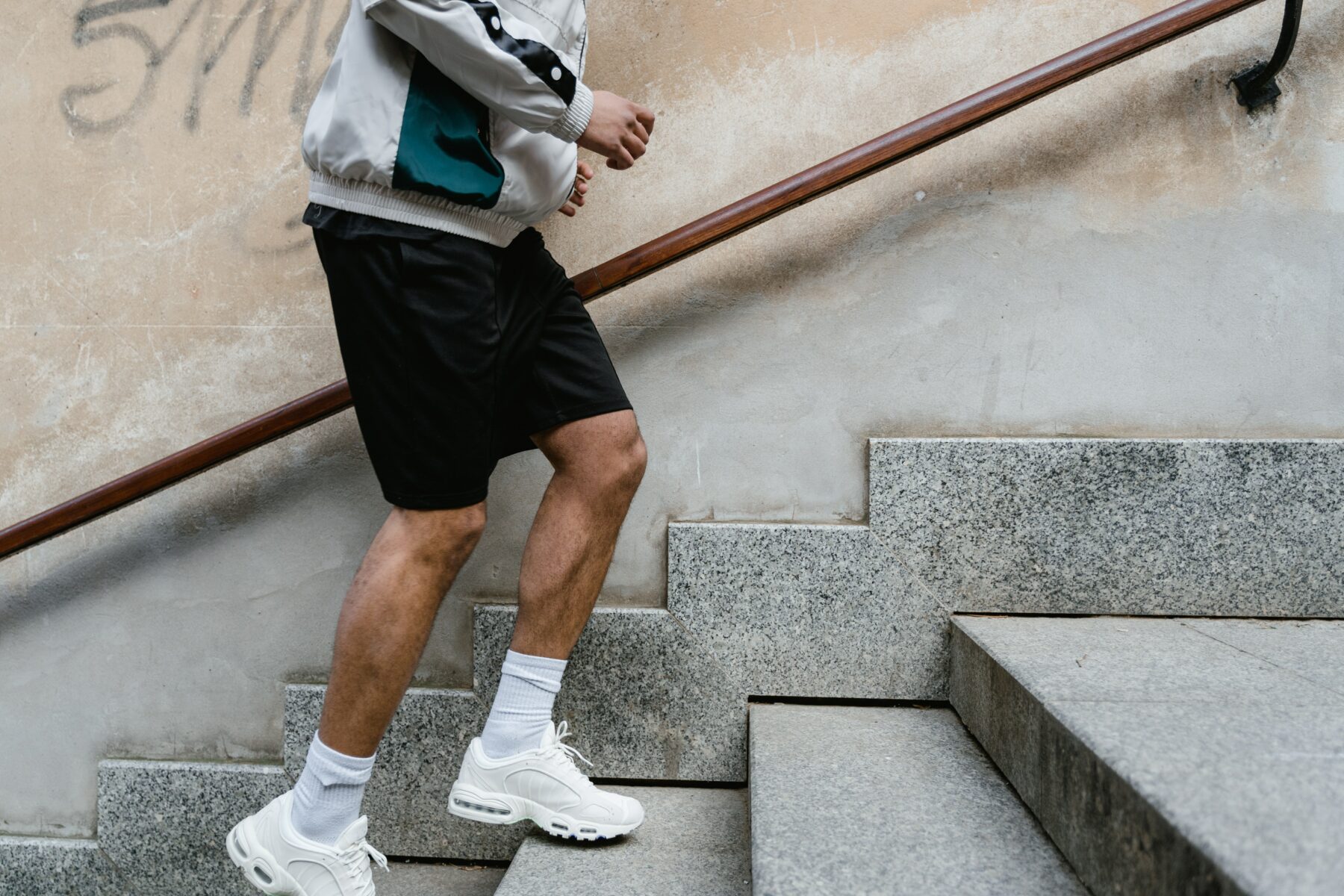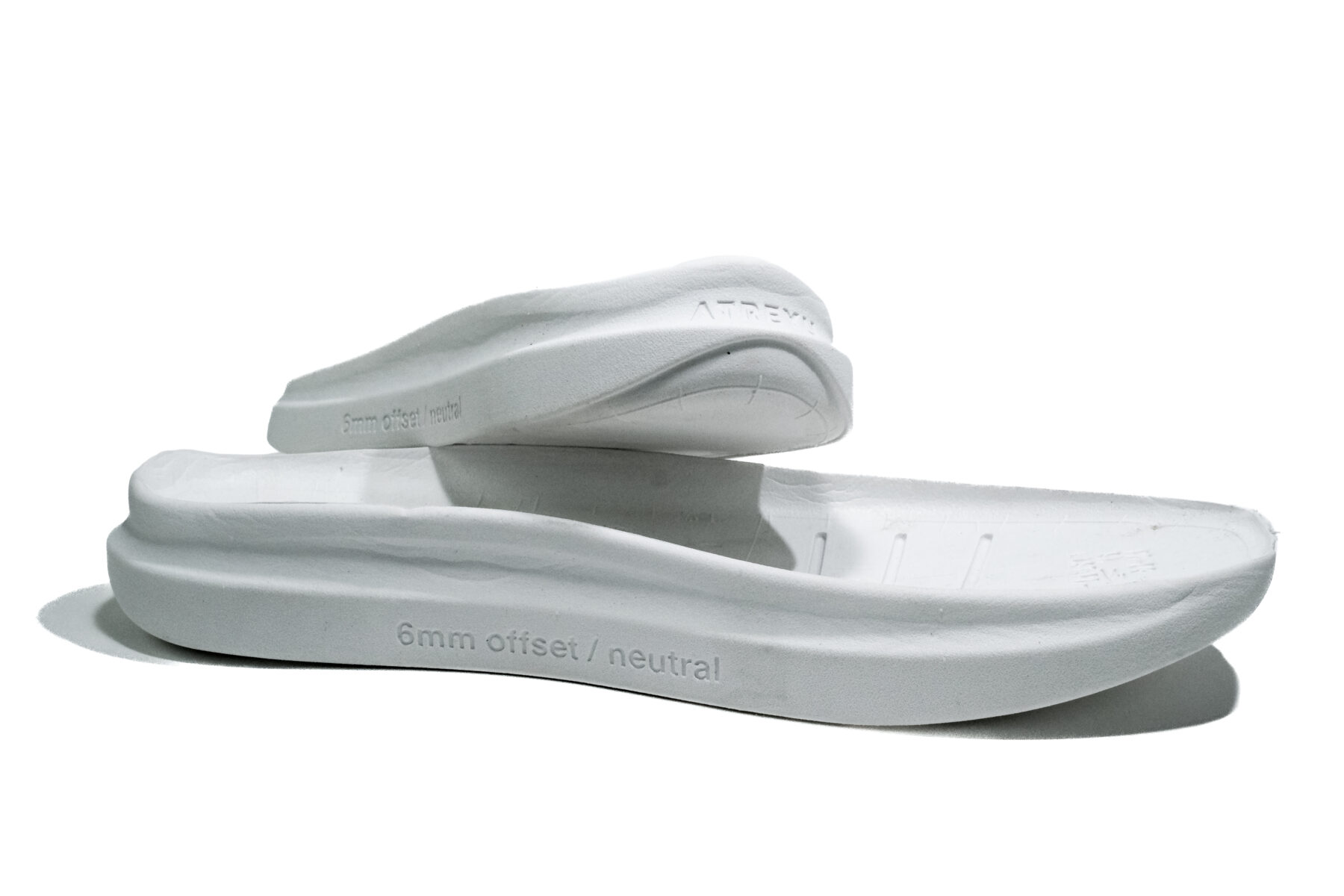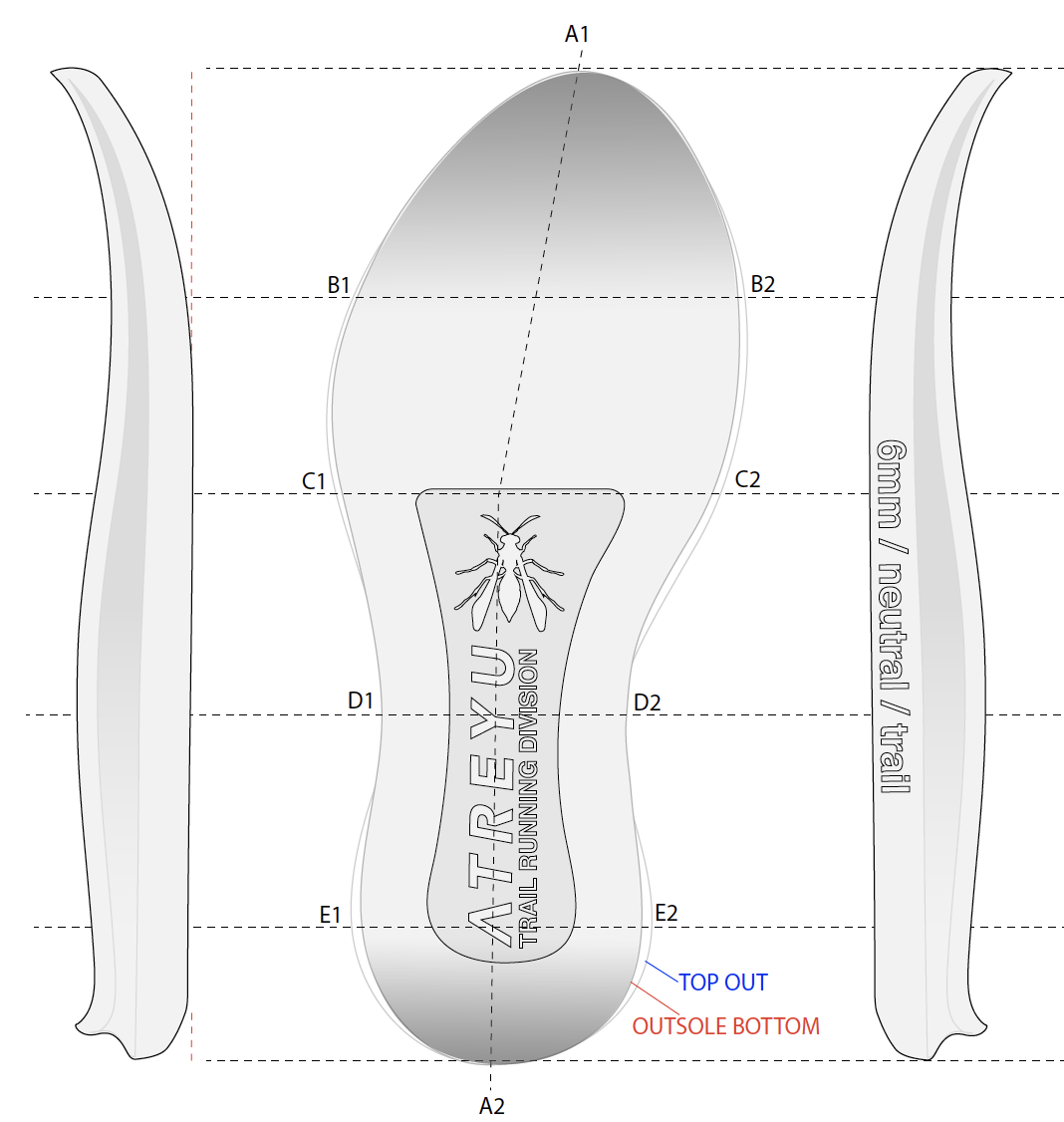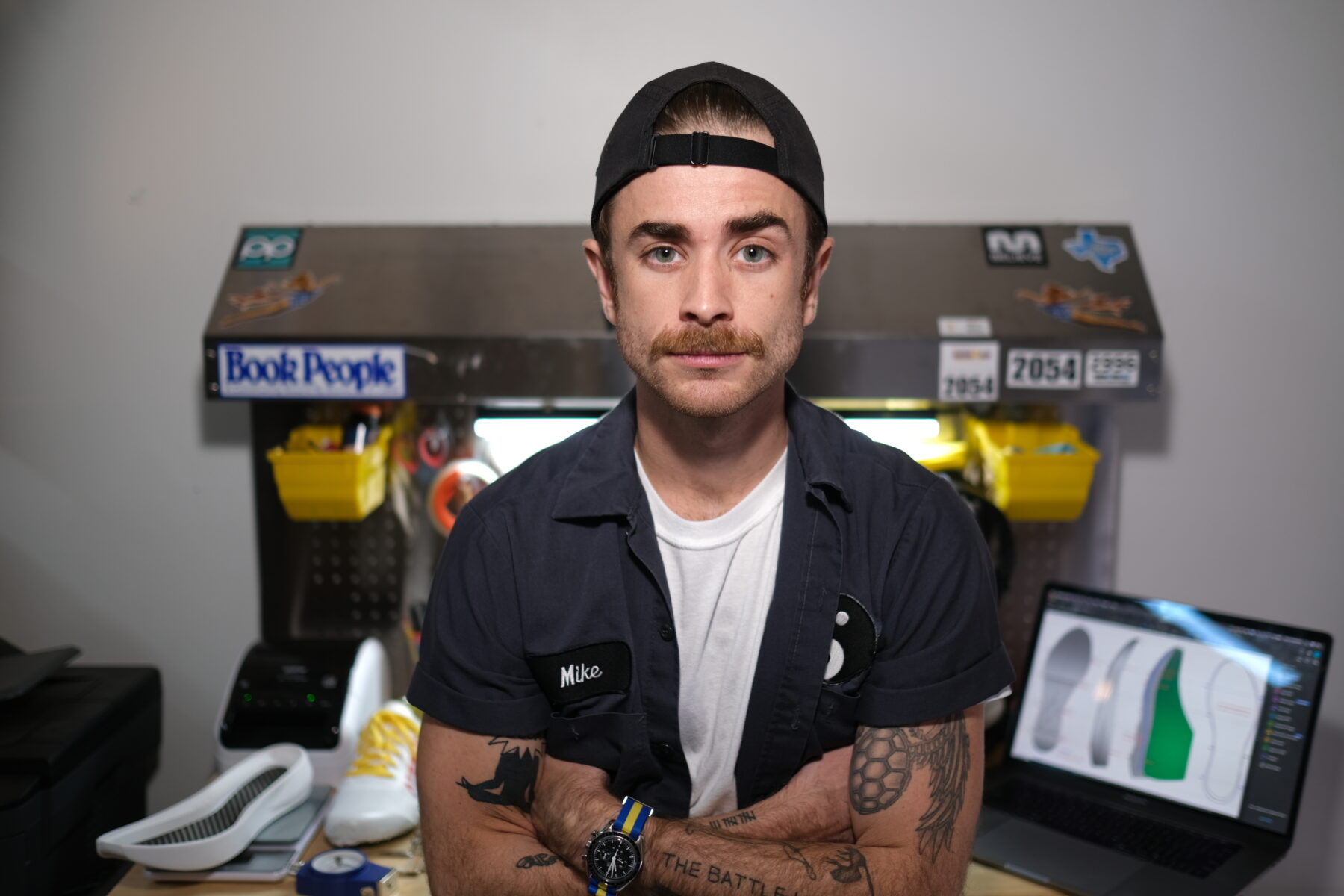Resilience of the Midsole: Running Shoe Design Series, Pt. 2

Last month, we covered the first part of the running shoe design series talking about the last (which is always first). This month, we’re covering the second part of the series: the midsole.
Once a designer completes the “last” process, the creative elements manifest quickly. A running shoe will need a tech pack, which is similar to a blueprint. This 2D tech pack includes all instructions that will be sent to a shoe factory to begin “tooling” molds and “patterning” fabrics. Within the digital document, the midsole section requires many details, views, “callouts,” and adorned measurements (in millimeters). There is no standardized formal structure of a tech pack, but there are expectations that designs will be communicated effectively via appropriately scaled visuals with associated dimensions.

Photo courtesy of Atreyu
A midsole is the foam area sandwiched between the foot and rubber. It’s responsible for a substantial share of the shoe’s performance. A designer can specify the durometer of a midsole — they can be produced softer (feeling more cushioned) or firmer (promoting better durability and stability characteristics). Typically, it takes many samples for the factory chemist to get the durometer of the midsole foam calibrated to suit the designer’s vision.
Designers have many important decisions to make before creating a midsole. For example, they must choose production materials, widths, the thickness of “stack heights,” and advanced features such as dual-density foams, multiple-piece construction or internal plates/shanks. Typically, a midsole falls into one of the following categories: neutral or stability.
These days, many shoes are designed to be thick and cushioned because runners often enjoy the extra comfort, but some designers want to promote a “ground feel” by eliminating excess foam under the foot. At this point, you might find yourself caught in the middle of some important questions. For example, should runners opt for thick midsole shoes to alleviate knee pain? This usage case seems logical, but some designers believe that a thinner midsole promoting a ground feel will illuminate our natural stride and thus could offer an advantage to mitigating knee pain naturally. Typically, a designer (or brand) will have an opinion about this, and there are many research studies challenging various hypotheses. Nevertheless, a designer must take a stance based on logical conclusions before the design process begins.

Photo courtesy of Atreyu
Perhaps the most exciting aspect of midsole design in modern footwear development is the use of advanced foams. It’s common for runners to crave “rebound resilience” or bounce. Materials like supercritical EVA or PEBA-based foams are highly desired, and many runners pay a premium to get their feet into a design that incorporates these “super foams.”
So what does a midsole represent? A midsole represents resilience. At an average of 180 SPM (strides per minute) while running for one hour, a pair of midsoles can sustain about 10,000 pressurized running strides. This resilience sets performance running shoes apart from casual shoes built for leisure wear. Typically, a running shoe midsole is rated for about 200 to 400 miles of sustained use. It’s also wise to let them sit for about 24 hours between activities to prolong their lifespan. Some folks have a second pair of shoes to rotate each day to ensure they’ll get the optimized rebound resilience that the foam will offer.
This factor of resilience for the midsole applies in our own lives as well — as humans, to be resilient is to bounce back from adversity and adapt. Even your favorite pair of shoes will eventually degrade or decompress into a “yard work shoe” at some point. This ephemeral beauty is a natural process in life and is represented well in the life of a midsole. We must be resilient and know when to adapt or pivot.
In conclusion, the midsole sandwiched between the “upper” and the “outsole” has many unique and hidden characteristics achieved through the design process. They may seem simple, but the materials can be innovative and extraordinary! The old adage of “it’s what’s inside that counts” would be an understatement.
About the Author

Michael Krajicek is the founder, CEO and designer of Atreyu shoes. He participates in marathons and triathlons and leads the Atreyu Run Club in Austin. When not participating in endurance sports or training, Krajicek enjoys photography and playing music.






